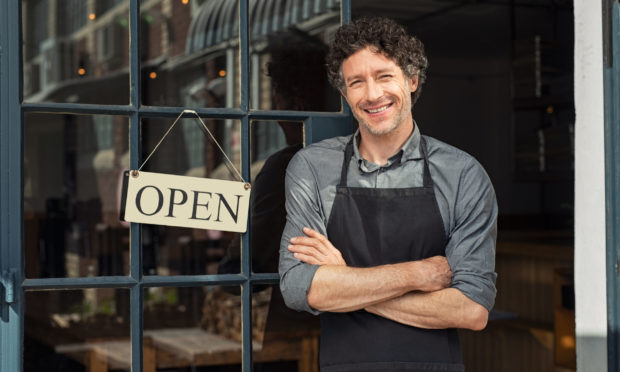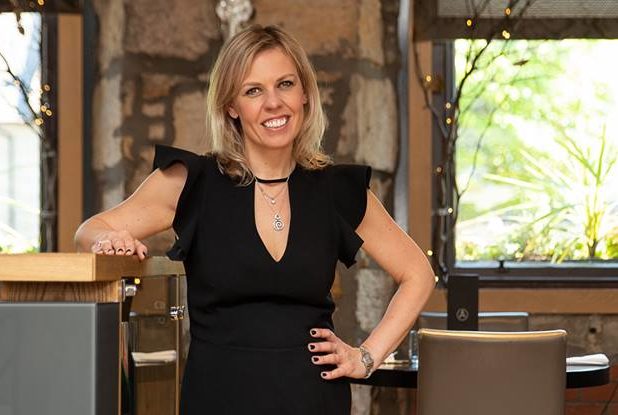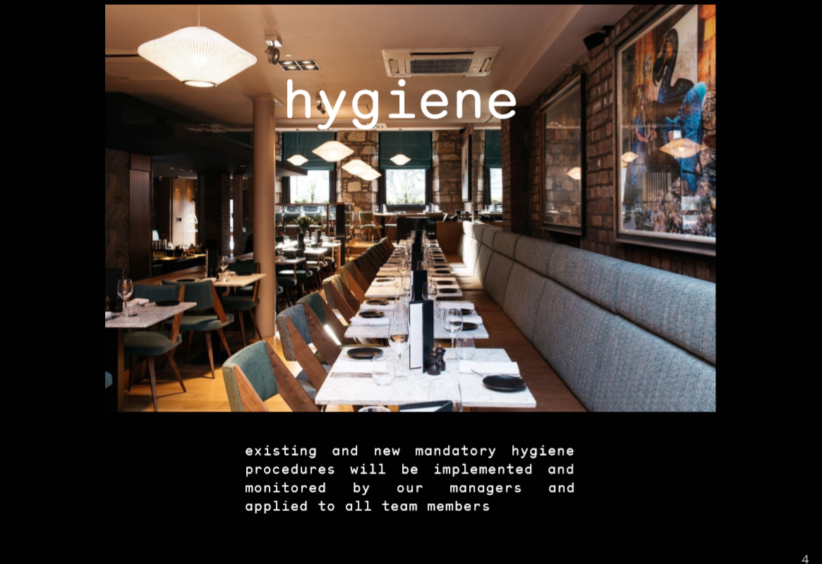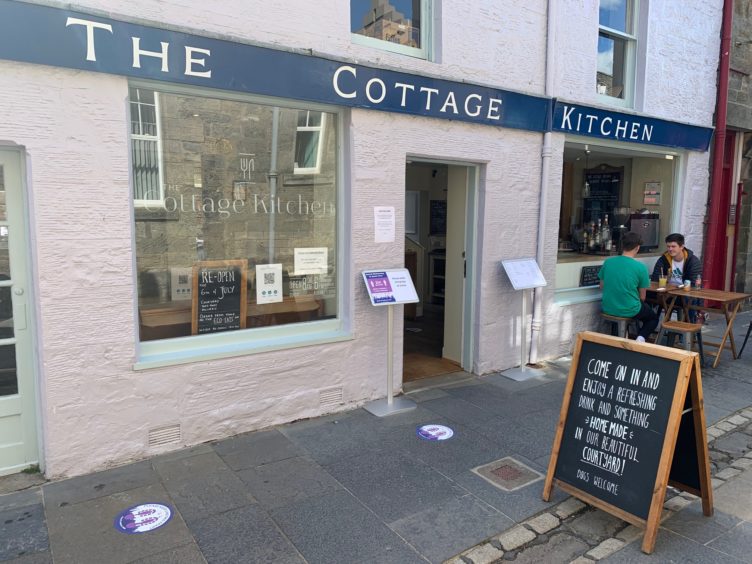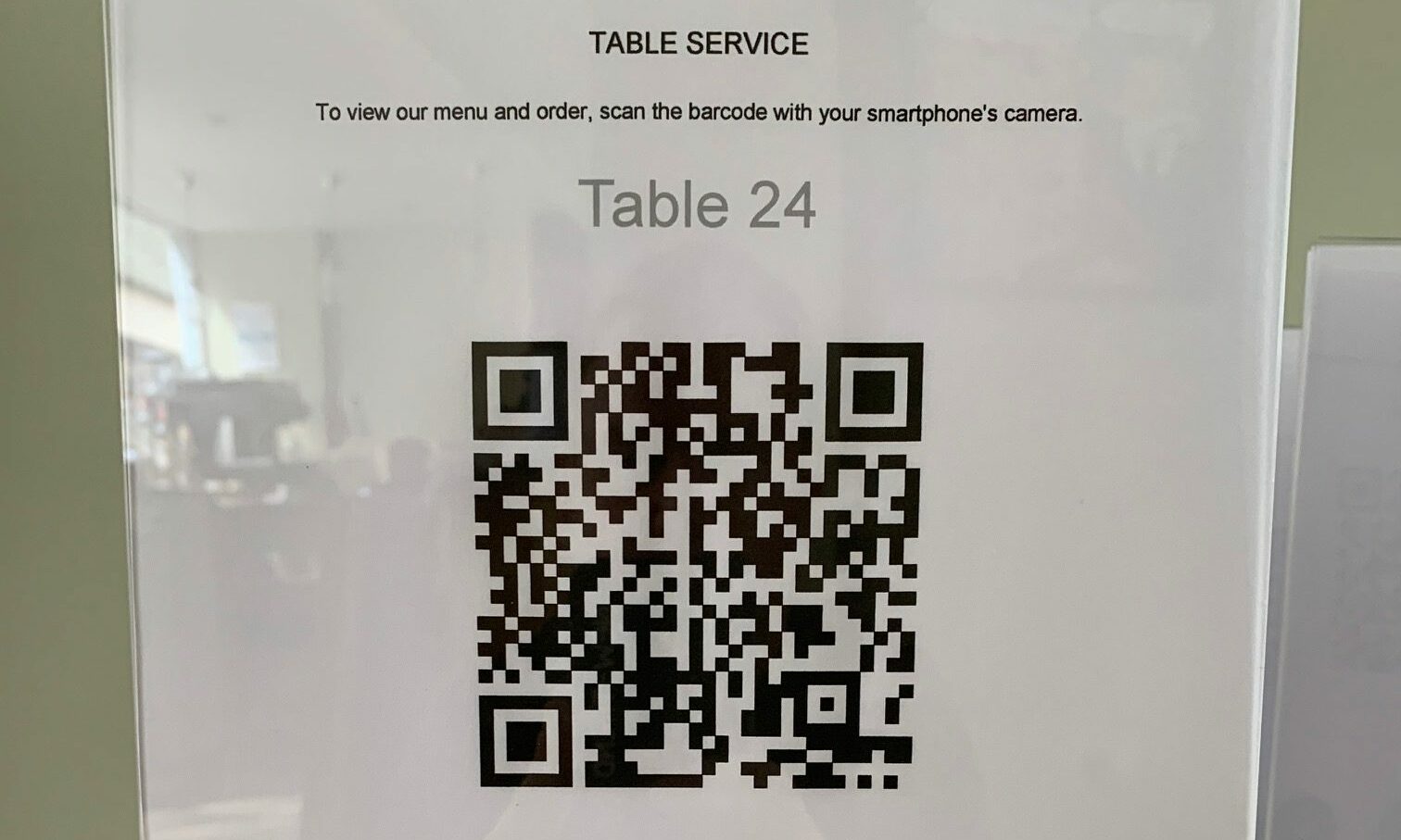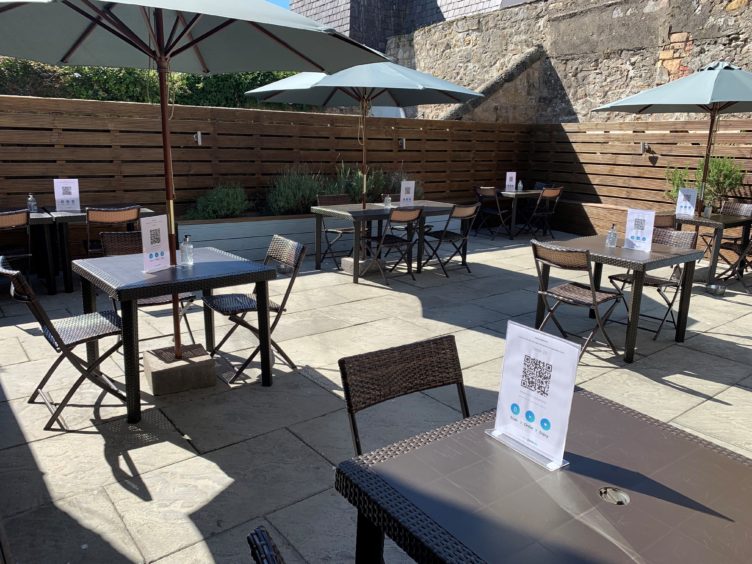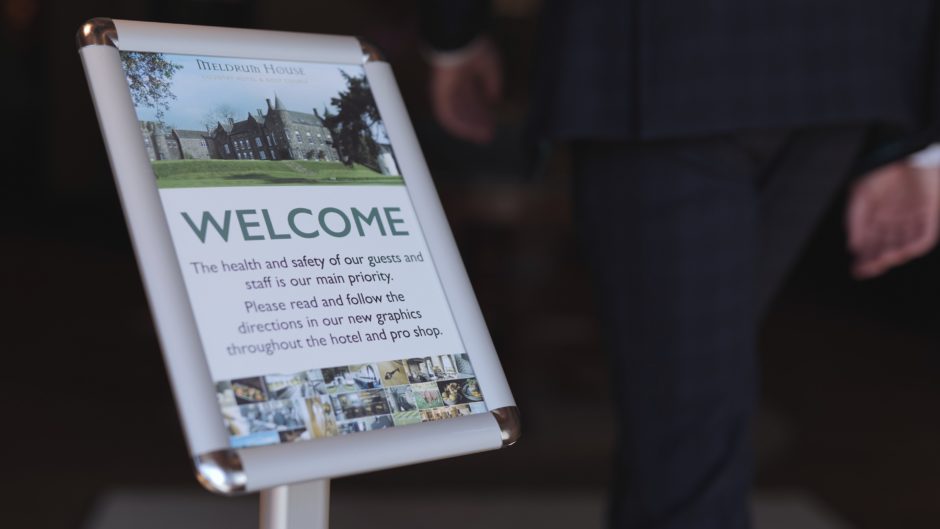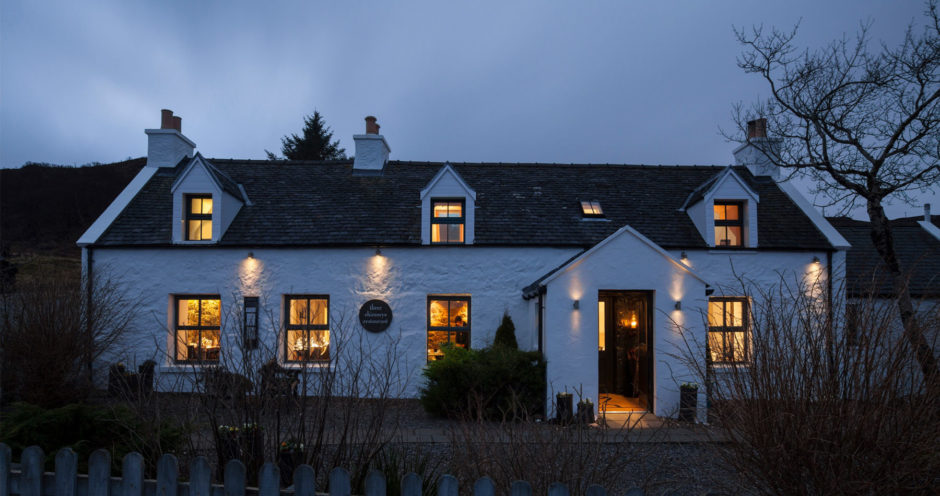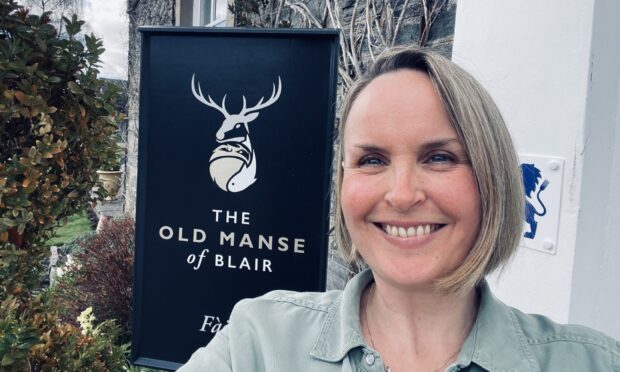When eateries open their doors to customers this week things will look and feel a little different. Clare Johnston finds out how businesses have been gearing up for the brave new world.
For Scotland’s restaurateurs the past three months have felt like the longest of their lives.
First there was the enormity of closing down the business that supports both themselves and their staff; then there was a nail-biting wait to find out what came next.
As the virus raged across the country, it became more and more evident that there would be no easy solutions and no fast route to reopening. When, on June 24, the first minister confirmed restaurants would be able to fully open to customers on July 15 there was finally a sense of purpose and focus again in the restaurant community.
The issue over the extent of distancing that would be required still lingered, and was resolved with the announcement from Nicola Sturgeon on July 2 that it would be reduced from two metres to one metre.
For many, this tipped the balance and made reopening viable, though there remain a significant number of restaurants in Scotland that will not reopen, or fear they’ll have to close. Those in the Scottish capital have been among the hardest hit with the usual throng of summer tourists gone and unlikely to return in the necessary numbers any time soon.
The great unknown is whether there will be enough Scots prepared to eat out on a sustained basis, even with the virus apparently contained for now. The announcement on July 8 by Chancellor Rishi Sunak, that everyone in the UK would be given a 50% reduction on the cost of a meal out in August, capped at £10, came in recognition that there is nervousness among the public. In response, he is incentivising them to “eat out to help out”.
The discount scheme, paired with a reduction in VAT from 20 to 5%, for hospitality firms will help build the case for reopening among business owners.
For those taking the plunge, their approaches may differ – but the determination to survive and succeed is shared.
In the seaside town of St Andrews, popular with tourists from near and far, restaurants are putting the finishing touches on their reopening plans.
Julie Lewis is managing director of The Adamson bar and restaurant, which opened in the town’s South Street in 2012 and is well known for its seasonal menus and locally-sourced produce.
These trademarks will form the basis of an adapted business model which will see the restaurant reopen with a slightly reduced menu and seating, due to distancing regulations, and with an “Adamson at Home” option that takes the restaurant to your door. It’s a model that many, though not all, Scottish restaurants are now adopting, believing that while covers will be reduced for the foreseeable future, the loss in revenue can potentially be off-set by deliveries and takeaways.
Julie explained: “It’s been incredibly challenging trying to understand the guidelines and the ins and outs of furlough. We’ve kept all our team on furlough so we’ve made sure we can support our workforce through this. We’ve been looking closely at the news to set the business up to survive. We want to come out of this the other side, financially and also safely. Everything changes so quickly so it’s trying to get it all right and make sure everyone is taken care of.
“We’ve got three parts to our business – the restaurant and cocktail bar and next door unit that was predominantly a lunch and brunch place and we’ve now turned that into a takeaway which opened on the 3rd of July. We’re doing an Adamson At Home option and we’ve also set up the Adamson Kit so you could enjoy our favourites, including a lobster and chateaubriand kit. We prep it up for you and all you have to do is heat it up at home. There’s a cocktail kit and a picnic kit too.
“When lockdown happened, my son, who’s 10, said, ‘You’re just going to have to sell different things and make it work in a different way’. That resonated with me, so instead of sitting still in this period and being overwhelmed by the difficulties and waiting for the business to make itself better. I thought, ‘You’re right, Charlie, I have to think of a different way to get through this.’
“We can’t go back to the environment of ‘everybody’s just going to stand at a bar and order a cocktail’. So we have to think about how we get products to guests in a different manner. We’ve talked to customers through this period and listened to what they’re asking for.
“We’ve also bought products that we didn’t think we’d ever do, like plants and candles. We did cocktail videos on social media through the lockdown period. People would say when I saw them in supermarket, ‘I loved that [cocktail] but I don’t have the shaker.’ So we’ll make up the cocktail and we sell it with a shaker and the things to make it with. We’re just diversifying into how we take our brands into people’s homes and welcome people into the restaurant safely.'”
With St Andrews being one of Scotland’s top tourist destinations, Julie is optimistic that they’ll get the numbers on reopening.
“St Andrews is a destination people will travel to this summer, they’ll feel confident going to the beach here so we’re hopeful.”
The restaurant has also created a post-Covid leaflet for diners to talk them through the measures in place, and through new technology, guests will be shown their seating plan before they arrive and can order via an app on their phone.
The decision to set everything out clearly for diners was based on the results of a survey of 700 customers which showed an encouraging 65% planned to spend the same time as before lockdown dining out when the restrictions are lifted, with a quarter happy to use hand sanitiser and contactless payments, but only 5% willing to wear a mask when not eating. A third wanted to see staff being temperature checked before starting their shift.
Just around the corner from The Adamson, on Logies Lane, is The Cottage Kitchen where owner Grant Poulton is equally upbeat.
When Grant opened the courtyard at the restaurant for outdoor business on July 6, he was pleasantly surprised when it came to looking at the takings at the end of the day.
The use of digital ordering for eating in, taking away and delivery means a similar number of meals can be served as before – but with greater efficiency.
He said: “We re-opened our courtyard with only 22 covers versus our normal 82. Through a mixture of new measures, but most notably the use of a new online ordering system called Good Eats, we were able to generate the same amount of income that we would expect if we were at full capacity.
“Customers order and pay through the app via a QR code. I can see a lot of businesses in Scotland having to do something similar and we thought we would jump in at the deep end and do it from the start. The company we’re using only launched a month ago and they said the uptake on the app down south has been huge and I think apps like this will become the norm.”
As with The Adamson, The Cottage Kitchen has also signed up to use the ecoeats app, set up by local students who deliver food using electric vehicle, e-bike or bicycle.
Grant said: “Using this app we can charge the same prices for delivery as we do for eating in because they are taking a low commission.
“My expectations around the takings on our first day of opening were much lower than what we actually did. It was a mixture of having outdoor space and 22 covers which was pretty much full all day. On a normal July day, with our 82 covers, we would have done a lot more, but in recent days we’ve taken what we would have done on a usual day off-season.
“The technology makes a huge difference. With those figures it’s given me confidence that we can survive this, if it continues like this and as long as there’s not a second spike.”
And though there is a lot of uncertainty around, and a few businesses locally expressing doubts about reopening, Grant believes The Cottage Kitchen can get back to normal levels of business before too long.
“The conversations I’ve had with other businesses shows there’s a lot of uncertainty and nervousness around. I can see a few small independently-owned businesses in St Andrews struggling to reopen. Come the 15th we can go to 54 covers in and out so we’ll be running at 65% capacity.
“I’m confident we can get [revenue] back to normal based on what’s happened so far. The technology is coming at the right time. It’s really going to take off and in six months time it will be the new norm to go into a restaurant and almost have no contact with staff until the food is brought to your table.”
Along on the shore, The Seafood Ristorante – named Scottish Restaurant of the Year by Catering in Scotland last year – plans to reopen on Thursday (16 July) with a new menu that will include its popular local ‘day-boat’ options.
Restaurant director, Stefano Pieraccini, said: “We’re continuing to follow the Scottish Government’s safe reopening guidance for the hospitality industry by reducing our outdoor seating capacity from 30 to 24 and our indoor seating capacity from 70 to 40 to maintain social distancing.
“Hand sanitisers will be available on arrival and on each table, plus face masks and protective gloves will be provided for all staff.
“Although we’ve made some necessary small changes to help people feel more at ease while eating out in public again, our core dining experience and values remain reassuringly unchanged.”
Further north, Jordan Charles, general manager of Meldrum House Country Hotel and Golf Course in Inverurie, says the business has also chosen to go on the front-foot.
He said: “Reducing the distancing rule to one metre gives us the opportunity to do what we are good at and create the buzz which people go out to restaurants and hotels for. We want to ensure it is as safe as possible when we open and will take on any conditions [the Scottish Government] may have in dropping from two to one [metre distancing].
“There’s been a lot of experienced hoteliers who have sat back and have done nothing. I value that point as, who knows, we’re all guessing here. We’ve invested heavily in walk-way systems, we’ve partnered with a hygiene company to recommend and get their expertise because we are not experts and have picked their brains about what we need to be doing and what products we should be using.
“We have invested in clear visual signage from the front door. We have adopted a one-way system which is in operation in our pro golf shop on-site and we have got a one-way system going in and out of our 1236 @ The Cave Bar. These high-traffic areas have been closely looked at.”
But the hotel is mindful that while safety comes first, they can’t afford to lose the welcoming look and feel that guests are used to.
Jordan added: “Face masks is a tricky one for me. For the back of house, with regards to food preparations, deliveries and that sort of thing, I do agree that we should be doing everything possible to reduce the risk.
“We were very lucky to win many accolades last year and one thing which made us stand out from the crowd was our customer service. I think we would really struggle to do that if we covered faces front of house. How do you get that warm welcome that you expect when you come to a property like Meldrum House?
“It is a big challenge and I certainly would welcome it back of house, especially for kitchen staff and those preparing food. For front of house, it would be a challenge to welcome guests in the manner that we and they are used to.
“We have invested in plastic screens across the hotel and and at the reception and guarded these high-traffic areas off for the safety of our teams and our guests.”
“We’ve always tried to be a bit different and ahead of the curve. We’ve tried to be pro-active and guess what we think will work. All of our signage features two-metre rulings on it, and I wouldn’t buy-in new signage as I want to make it evident to people to keep their distance as that is what the first minister is saying. We’re trying to be pro-active and I think we’re doing well.”
While menus will be simplified, customer favourites will remain. Now the staff hope that with the business from weddings and overseas tourists severely limited, domestic visitors will save the day.
Jordan added: “For the re-opening we’ve looked at the flavours of 1236 [Cave Bar] that our customers love and in Pineapple [restaurant] we’ve condensed it down to one menu to make it easier, and to also ensure social distancing in our kitchen as we can’t bring back all of these chefs to work in a small kitchen. We’ve got to be realistic with that.
“There’s a huge domestic appetite out there and I just hope that is enough that this business requires as weddings are going to be a struggle for the remainder of this year, and Christmas has a big question mark over it. [The demand] is certainly out there and I just hope it can replace the international business that comes. I hope it is enough to keep us going.”
At the world-renowned The Three Chimneys on Skye, owner Gordon Campell Gray revealed guests could expect to see changes, but as with Meldrum House, they are working hard to maintain the essence of their service.
Outlining the new measures, he said: “At the moment it seems temperature checks [for staff], the rooms will be zapped with sanitising equipment, there will be no paper, kettles, coffee machines. In the restaurant there will be dishes on a blackboard, everything’s going on an app and there will be a menu on paper too which will be disposed of after use.
“It will be contactless payment and we’re definitely going to be taking names, addresses, which will be law.
“The menu will be a little shorter. I think it’s just what people will want. We’ve kept our prices the same and, of course, there will be a huge welcome on the mat.”
